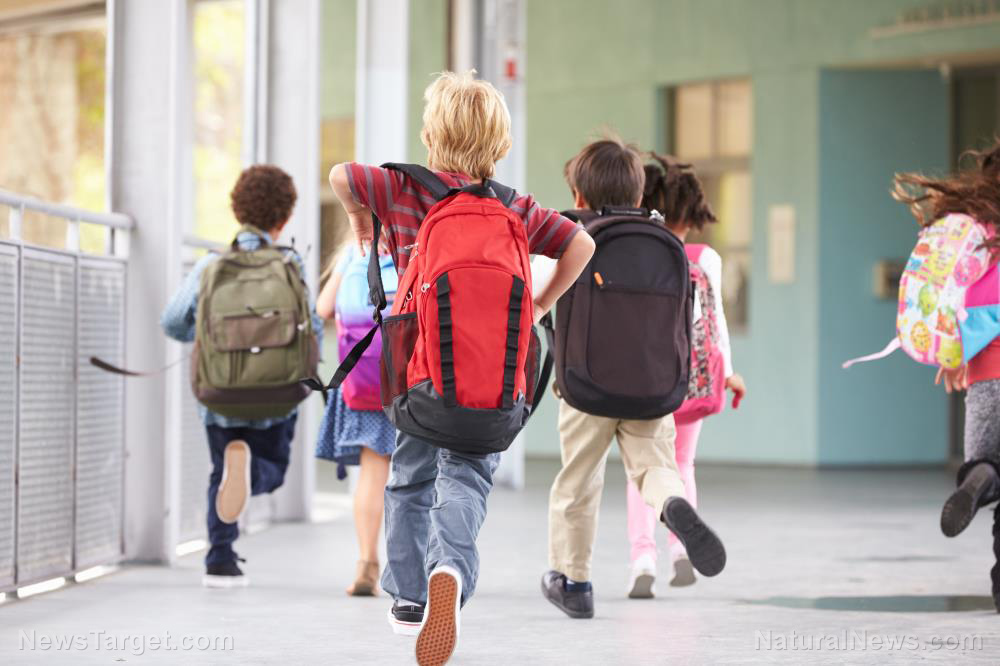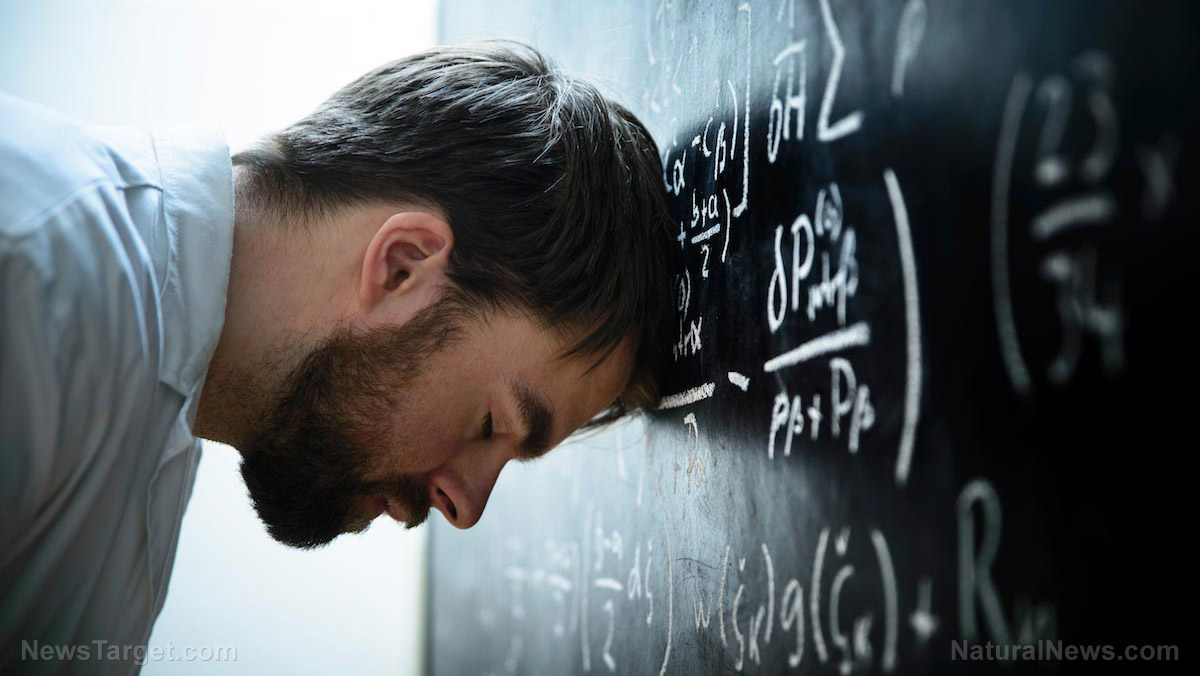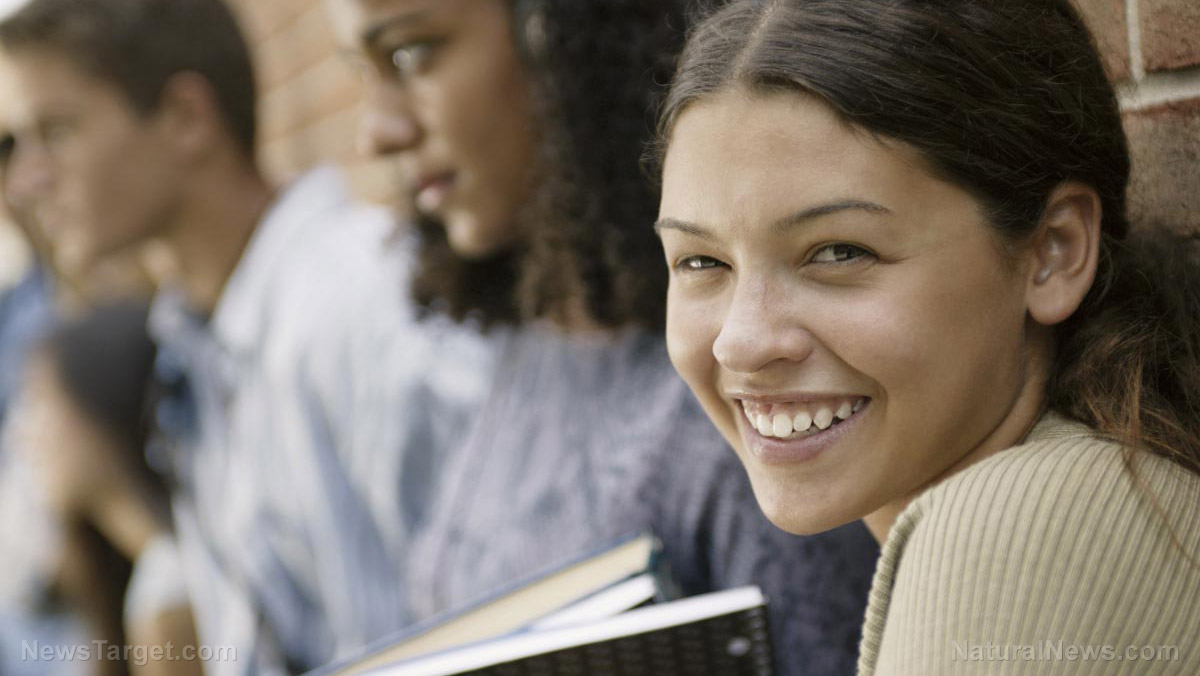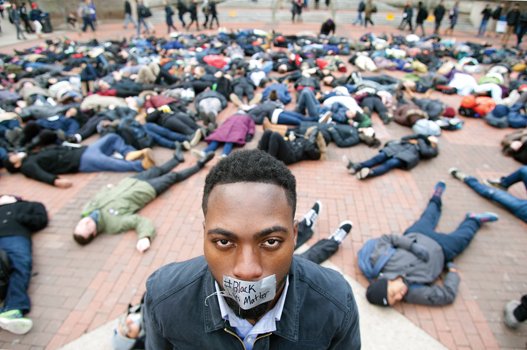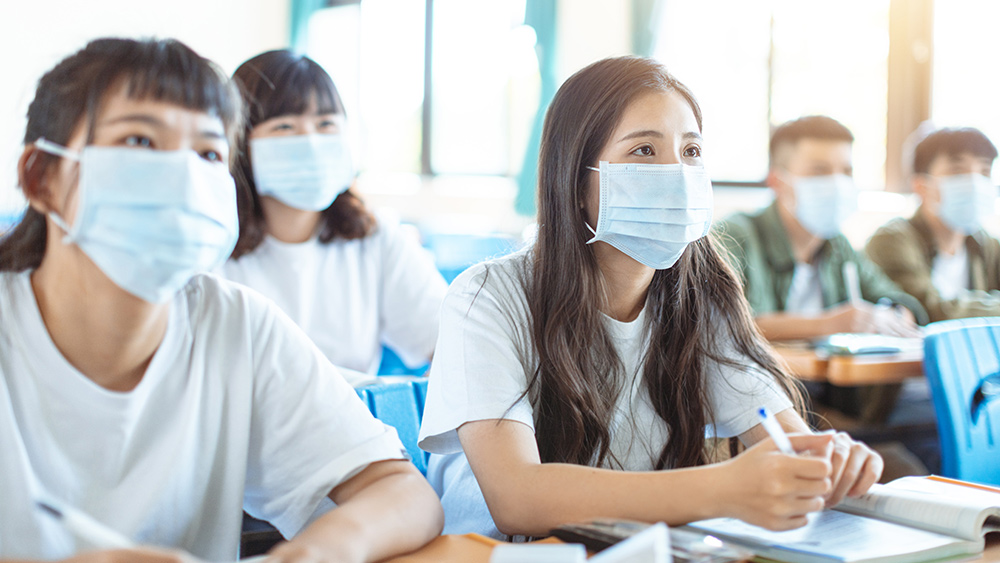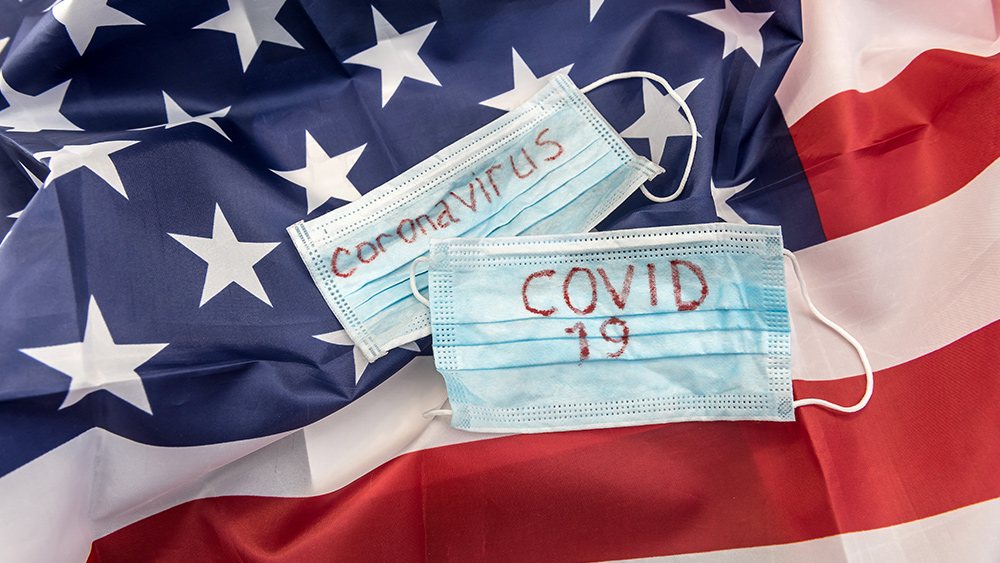LAWSUIT: California parents want schools to fully reopen as students struggle with distance learning
09/21/2020 / By Zoey Sky
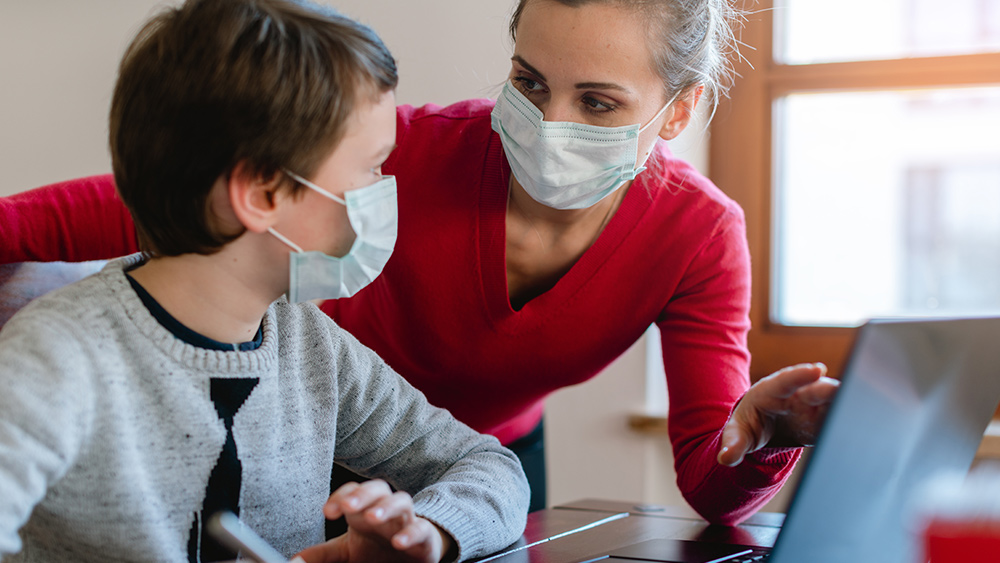
Americans of all ages have been forced to adjust to a new way of life because of the coronavirus (COVID-19) pandemic. From lockdowns to social distancing, people have had to stay inside their homes for extended periods of time to prevent the spread of the infectious disease.
However, parents have expressed their worry for children who seem to be struggling with distance learning models. In fact, parents in California are suing Gov. Gavin Newsom over the state’s pandemic-related restrictions on in-person educational instruction.
Distance learning is harming the mental health of students, claim parents
Parents in California worried about the mental well-being of their children are suing Newsom over the ban on in-person classes. The lawsuit, cited Looney v. Newsom, was filed in the Shasta County Office of the Superior Court of the State of California.
Shasta County is located north of Sacramento, the state capital.
The parents filing the lawsuit say that Newsom’s policies “unjustifiably prevent schools in Shasta County from fully reopening.” They added that students are unable to proceed with their education because they need access to services and resources that can’t be provided remotely.
Parents in California say that the state’s response to COVID-19 are giving students, particularly those from disadvantaged families, “from accessing a quality education.” Because of the ban, students in California are being denied “their constitutional right to a quality education as enshrined in the California Constitution.”
These policies prevent students from learning skills and acquiring the knowledge they’ll need to succeed in America’s competitive economy. In the long run, remote learning can even hinder these students from becoming “informed citizens and productive members of society,” claimed the concerned parents.
Students are frustrated and anxious
Beth Watt, a parent and plaintiff in the lawsuit, detailed her concerns in a statement from the Freedom Foundation, a group representing the parents.
Formerly called the Evergreen Freedom Foundation, the Freedom Foundation is a non-profit think and action tank. The group has offices in several states like California, Ohio, Oregon, Pennsylvania and Washington.
Freedom Foundation aims to “reverse the stranglehold government unions” have on both state and local policymaking.
According to Watt, her three children are all struggling with the current distance learning model mandated by local schools. Before the pandemic, all her children were straight-A students.
But this spring, Watt’s children received a “P” for all subjects, which made them lose all motivation to excel in school. “P” indicates a “Pass” in a “Pass-Fail” grading system. She added that there are times when her kids would cry tears of frustration because of the lack of instruction.
Since classes are held online, Watt’s children have also had to deal with poor connectivity as they work their way through their assigned online curriculum.
Watt’s son is on anxiety medication for the first time, emphasizing the fact that online education is linked to mental health issues. Distance learning is also causing an academic crisis that students in many states find themselves in.
Watts concluded, “Our children deserve better than this; our tax-funded education system is failing students.” (Related: Los Angeles and San Diego school districts will not reopen schools in the fall, while children pay the price.)
Students need to be in school
Attorney Mariah Gondeiro, who is acting in the case, backs the parents of California. While Newsom insists that residents should “trust the science,” Gondeiro believes it is time for the governor to take to his own advice.
Health experts from the Centers for Disease Control and Prevention (CDC) and the American Academy of Pediatrics echo the concern of parents and thousands of educators: Students should go back to school.
This isn’t the first time that parents have spoken up about mandated distance learning models.
On May 4, Newsom issued Executive Order N-60-20, which required all residents of California “to obey all state and local public health directives and orders, including the California Department of Public Health’s guidance for schools.”
After that, Newsom announced a framework for when and how schools should reopen for in-person instruction during the COVID-19 pandemic on July 17. He explained that in the state, experts refer to health data to determine when a school can be physically open and when it should close.
Newsom insisted that learning should never stop and that parents, students and staff would want to resume “in-classroom instruction, but only if it can be done safely.”
All private and public schools in counties with increasing numbers of coronavirus cases are forbidden from resuming in-person classes. The counties must also meet strict criteria before being allowed to reopen. California has at least 6.7 million students in its 1,000 school districts.
Newsom’s office didn’t immediately respond to requests for comment about the lawsuit from parents in California.
This isn’t the only lawsuit that has been filed against the governor because of the policy. Brach v. Newsom was filed in U.S. District Court for the Central District of California last July 29.
Jesse Petrilla, a father of two boys and a plaintiff in the suit, believes the cons of keeping schools closed “far outweigh the risks of opening them.”
After schools closed in March, Petrilla noticed a “significant decline in engagement and motivation and enthusiasm for learning” in his sons. Both he and his wife were concerned about the psychological long-term effects of having students follow distance learning models.
While students from affluent and working-class families are affected differently by mandated remote learning, a lot of financially struggling families often rely on school lunches. Petrilla concluded that parents, teachers and districts should all have a choice and that Newsom is “trying to take away that freedom with this order.”
Studies show that students suffer academically because of distance learning
Recent studies have found that by September, the majority of students will struggle to keep up with their peers if they had stayed in classrooms. Some students could even lose the equivalent of a full school year’s worth of academic gains.
Experts added that racial and socioeconomic achievement gaps may continue to widen because not all students have access to computers, home internet connections and direct instruction from their teachers.
According to a working paper from the Northwest Evaluation Association (NWEA), a nonprofit organization, and researchers from Brown University and the University of Virginia, the average student could begin the next school year having lost as much as one-third of the expected progress from the previous year in reading and 50 percent of the expected progress in math.
Extended distance learning mandates can affect more than a student’s mental health. If schools continue to teach fully or partly online during fall or if they reopen with significant budget cuts because of the pandemic-related economic downturn, high school dropout rates could increase.
Meanwhile, younger students may miss out on foundational concepts in phonics and fractions that will help prepare them for school or work.
Under normal circumstances, students with learning disabilities and behavioral disorders already struggle with their schooling. Now, teachers are worried that these students will continue to face more challenges with distance learning models.
Visit Pandemic.news to read more articles about how the coronavirus pandemic has affected the lives and overall well-being of students in America.
Sources include:
Tagged Under: distance learning, distance learning model, education, flu, Freedom Foundation, Gavin Newsom, government, in-person learning, infections, lockdowns, Looney vs. Newsom, Online learning, outbreak, pandemic, parents, public education, public schools, remote learning, remote schooling, schools, Shasta County, superbugs, Teachers, virus
RECENT NEWS & ARTICLES
COPYRIGHT © 2018 PUBLICEDUCATION.NEWS
All content posted on this site is protected under Free Speech. PublicEducation.news is not responsible for content written by contributing authors. The information on this site is provided for educational and entertainment purposes only. It is not intended as a substitute for professional advice of any kind. PublicEducation.news assumes no responsibility for the use or misuse of this material. All trademarks, registered trademarks and service marks mentioned on this site are the property of their respective owners.


